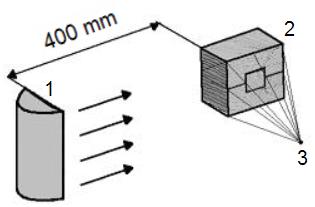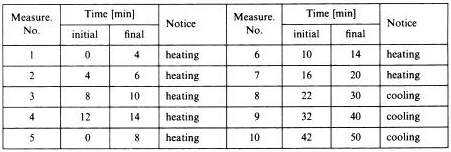Study_of_Drying_Process_of_Wood_Joints
3.2.3 Study of Drying Process of Wood Joints
The studies of heat transmission through the joints of timber are traditionally done using such common experimental equipment as thermo-elements. However, these methods offer only information concerning the predefined points. Optical measurements can provide qualitative and quantitative data useful for determining surface deformations.
In the case of experiments with thermal deformation of a wood joint as the test specimen being deformed in the process of its heating induced by an infrared thermal source, the series of experiments promising to provide all components of the thermal deformation process by the double-exposure method were under consideration.
The aim was to measure the micro-displacements of the wood surface exposed to the heating, and to study these micro-displacements taking into account the temperature inside the test specimen (Crisóstomo et al, 1997).
3.2.3.1 Description of the Experiment
By means of holographic interferometry using the double-exposure method, many experiments were carried out in order to reveal the time dependency of the wood joint thermal deformation. The infrared source (type P-511, performance 500 W) in the distance of 400 mm from the test specimen was used for heating.

1 – infrared radiator, 2 – test specimen, 3 – source of laser radiation
In the experiments only the wood joint was taken into consideration irrespective of the upper (cover) and lower (base) parts. The test specimen used in the measurements (Fig. 3–38) was cut out of a long wood beam with the dimensions 120 × 120 × 60 mm, inside which was a tongue measuring 40 × 40 × 60 mm. The record of the thermal flow was obtained by measurement of the tension in the joint during the holographic experiments. For this purpose the thermo-elements set on the other side of the joint were used.
Before the final experiments the optimal time interval for both the measurement and analysis of the thermal deformations was sought for.
Before the first measurement, the thermal source – the infrared radiator – radiated heat on the test specimen for 30 minutes, then the record was inscribed on the holographic plate.
30 minutes later, the first exposure was made and the second one was made after the other four minutes of heating.
In Tab. 3.1 the time interval of heating and cooling of the test specimen for all measurements is shown.
Tab. 3.1 Time of heating and cooling of the test specimen



